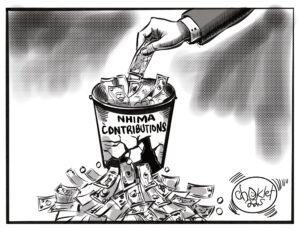In this week’s edition of the Monday Opinion, we will delve into the BRICS economy, focusing on its origin, expansion, and transformative impact on the global economic landscape. Our analysis will encompass various facets, including the measurement of its economic prowess through indicators like Gross Domestic Product (GDP), as well as its efforts to foster enhanced economic collaboration in vital domains such as trade and investment. Additionally, we will delve into the noteworthy cultural and educational exchanges that have taken place among the BRICS member nations.
BRICS is an acronym for a group of emerging market economies comprising of Brazil, Russia, India, China and South Africa. It was originally formed in 2001 as BRIC by economist Jim O’Neil with the goal of promoting dialogue and cooperation among member countries in an incremental, proactive, pragmatic, open and transparent manner. In 2010, South Africa joined the initiative and the name changed to BRICS. The aim of BRICS is to promote peace, security, development, cooperation while augmenting development of humanity and establishing a more equitable and fairer world.
Many saw this group as a symbol of economic hope and optimism for developing countries in Africa, Asia, Latin America and the Global South. At the time of inception, the economies of Brazil, Russia, India and China were experiencing significant growth which raised eyebrows and attracted attention regarding their impact on the global economy. The relationship among members of the BRICS is guided by the generally recognised principles and norms which have been agreed by members as contained in the United Nations (UN) Charter.
Since inception, the group has developed high level political interactions through its annual summit. Added to that, they have created economic institutions like the New Development Bank (NDB) which works to mobilize resources for infrastructure and sustainable development in BRICS and the Contingent Reserve Arrangement (CRA), a framework that aims to provide supports through additional liquidity and precautionary instruments in response to actual or potential short-term balance of payment pressures.
On the international scene, the BRICS have earned recognition and influence due to the growing economies of member countries, substantial population composition, abundant natural resources and their overall significance as one of the major forces steering global economic development. The rise of the BRICS economies has also challenged the traditional dominance of Western economies, signalling a shifting balance of power in the global economic order. According to World Factbook, BRICS account for about 43 percent of the world’s population and contributes over 31 percent to the world’s Gross Domestic Product (GDP), surpassing the likes of G7 which contributes about 30 percent. Their collective influence has reshaped international trade, finance, and investment, offering alternative avenues for development, and serving as important contributors to the world economy.
Additionally, the BRICS contribute about 16 percent to the world’s trade. Member countries have been making deliberate efforts to promote trade expansions among themselves. One of the reasons for this is to encourage a switch from raw materials to value added manufactured goods.
Apart from trade, BRICS have equally made strides in investment. According to the BRICS Investment Report published by the United Nations, Foreign Direct Investment (FDI) has significantly contributed to the growth of BRICS economies. The report indicates that the total share of BRICS FDI to global FDI doubled from 11 percent in 2001 to 22 percent in 2021.
To allow for shared aspirations in varying development trajectories, BRICS have also developed collaborations in education and cultural exchanges. In education, member countries have developed education systems and policies that foster access, quality and equity. Collaborations in education are biased towards skills development, especially technical and vocational education training that all five member countries have recognised as ingredients for inclusive and sustainable development. To enhance cultural exchange, member countries have participated in cultural exchange programmes through reciprocal visits.
In conclusion, we can notably see that BRICS member countries have enjoyed the privileges of enhanced trade and investment. They have also benefited from value addition in manufacturing as well as cooperations and collaborations in education and cultural exchange. Join us next week, as we tilt our focus to look at the potential impact of BRICS on the global financial system as well as how Zambia should position itself with regards to the probable shift of global power.
About the Author
Matrina M. Mumba is a Public Finance Management Researcher at the Centre for Trade Policy and Development (CTPD). She holds a Master of art degree in Economics from the University of Zambia and a Bachelor of Arts degree in Economics from the University of Zambia.
























